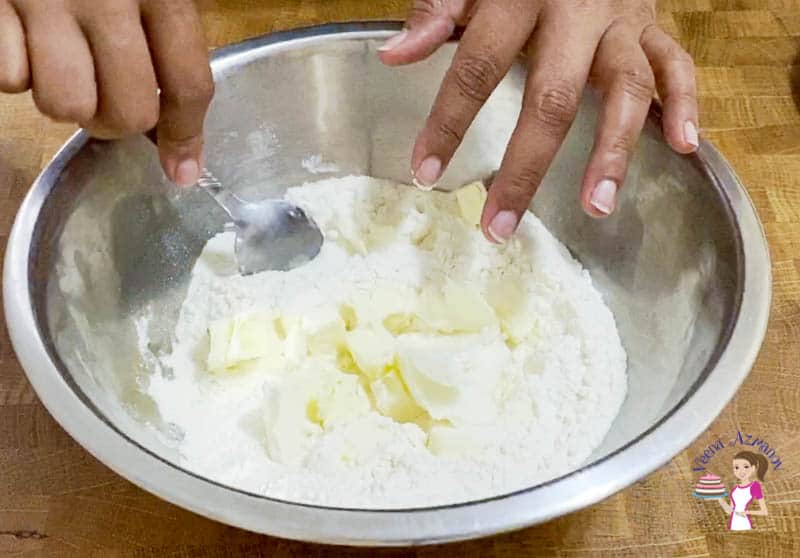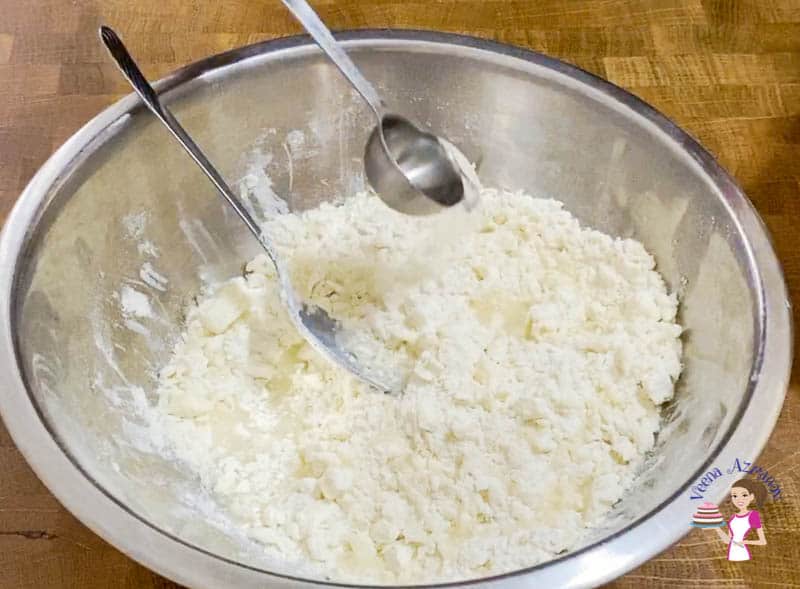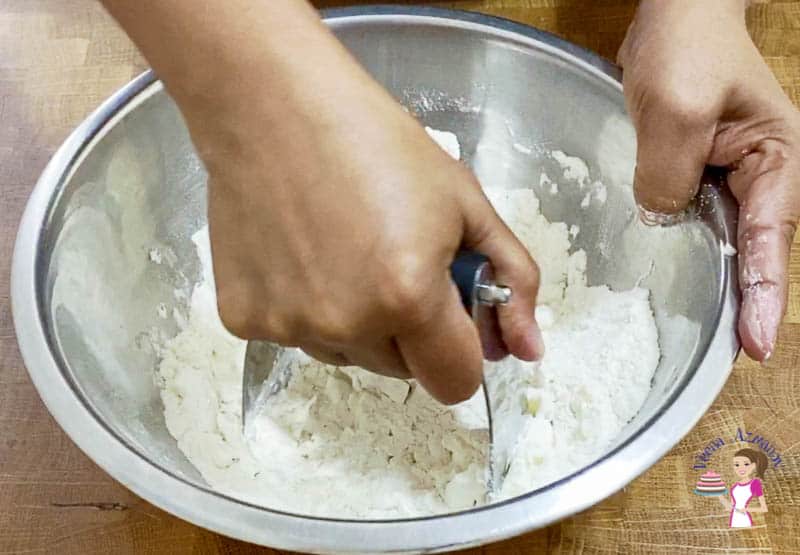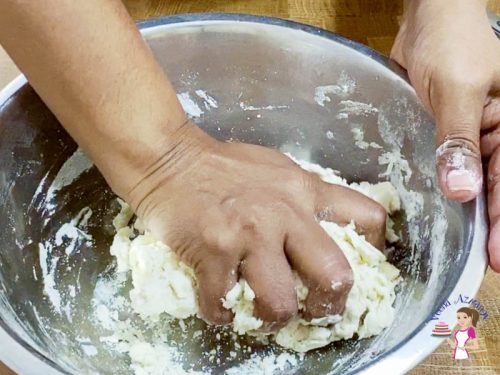This pie crust with shortening and butter is my mom’s favorite method of making pie. Rich, buttery, and flaky crust for all your pies, savory or sweet.
I am very proud of my pie crust recipes. And, I make an all-butter pie crust either in the food processor or by hand.
But, this is my mom’s recipe. She used to say,” it’s all about the fat”. My grandmother would use 100% lard (animal fat), and my mom would use 50% vegetable shortening and 50% butter.
I hate to admit it, but everyone LOVED her pie crust. That buttery, flakiness that just melted away with every bite.
The secret to making good pie dough is to chill everything. First, I measure my ingredients and leave them in the fridge. Flour, shortening, butter, water. That way, when I am ready to make the crust it takes me just 5 minutes using a food processor or 10 minutes by hand.
Also, make sure the fat is chilled, so you get a nice flaky crust. Because, if the fat melts, you will lose that flakiness. The pieces of fat in the dough melt in the oven during baking. And, this fat creates steam. And, this steam creates these separations in the dough, which results in that flakiness. You can also use it to make crusts for your quiches or a double pie crust to make an apple pie.
This pie crust calls for shortening, which is easy to incorporate into the dough and makes the crust easier to roll out. Plus, a pie crust with shortening holds its shape better than others. This means it’s a great choice if you’re planning to make a decorative pie.
:max_bytes(150000):strip_icc()/__opt__aboutcom__coeus__resources__content_migration__serious_eats__seriouseats.com__images__2015__10__20151017-easy-pie-dough-vicky-wasik-21-532c66b450524eb9925d113331ce5819.jpg)
Pie Crust with Shortening
- ▢ 1 ½ cups (190 g) All-purpose flour
- ▢ 2 oz (60 g) Unsalted Butter (chilled, cubed)
- ▢ 2 oz (60 g) Vegetable shortening (chilled)
- ▢ ½ tsp Salt
- ▢ 4 tbsp (60 ml) Chilled water
- Make sure the vegetable shortening and butter is chilled, so the butter can be cut into cubes. When cold, cut into small cubes.
- Measure the ingredients – place flour and salt in a metal bowl.
- Make sure you have cold water (you can also drop a few cubes of ice in a bowl of water).
- Use a fork, pastry blender, or your fingertips to cut the butter and vegetable shortening into the flour until you have a bread crumb consistencyTip– If using your hands squish the fat and flour between your fingers. But do not overwork the dough as the warmth of your hands will soften the butter.
- Add the chilled water in three batches – only as much as you need.
- Gather all the crumbs into a ball.
- Wrap in plastic wrap and chill for at least an hour.
Step by step instructions
- Make sure the vegetable shortening and butter is chilled, so the butter can be cut into cubes. When cold, cut into small cubes.
- Measure the ingredients – place flour and salt in a metal bowl.
- Make sure you have cold water (you can also drop a few cubes of ice in a bowl of water).
- Use a fork, pastry blender, or your fingertips to cut the butter and vegetable shortening into the flour until you have a bread crumb consistencyTip – If using your hands squish the fat and flour between your fingers. But do not overwork the dough as the warmth of your hands will soften the butter.
- Then, add the chilled water in three batches – only as much as you need.
- Next, gather all the crumbs into a ball.
- And, wrap in plastic wrap and chill for at least an hour.




Easy Crisco Pie Crust
FAQ
What does shortening do for a pie crust?
Why does shortening make pie crust flaky?
What can you use instead of shortening for pie crust?
Can you make a pie crust with shortening?
Yes! Cold pockets of shortening are responsible for making the flaky layers in a pie crust as it bakes. Place the flour, butter, sugar, and salt into a food processor. Pulse until the mixture resembles coarse cornmeal. Add the shortening, and pulse a few more times until its incorporated.
Is shortening bad for pie dough?
All-shortening pie dough is therefore more difficult to mess up and it’s a lot easier to end up with a perfectly flaky pie crust! Shortening 1, butter 1. However, shortening is said to taste bad. Like icky bad… That’s another reason why many home cooks avoid it.
Should you chill shortening before making a pie crust?
Additionally, the cold shortening helps to create a nice flaky texture in the pie crust. Therefore, it is highly recommended that you chill the shortening before using it in a pie crust. The original recipe requires a chilling period of one before and one after the dough has been rolled out.
What is the difference between shortening and all-shortening pie dough?
Shortening, on the other hand, melts at a temperature of about 47°C/116°F, which means that – no matter how much of a hottie you are – you cannot melt it by simply touching it. All-shortening pie dough is therefore more difficult to mess up and it’s a lot easier to end up with a perfectly flaky pie crust! Shortening 1, butter 1.
